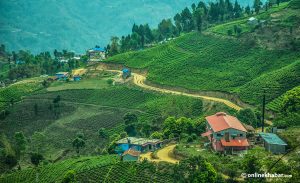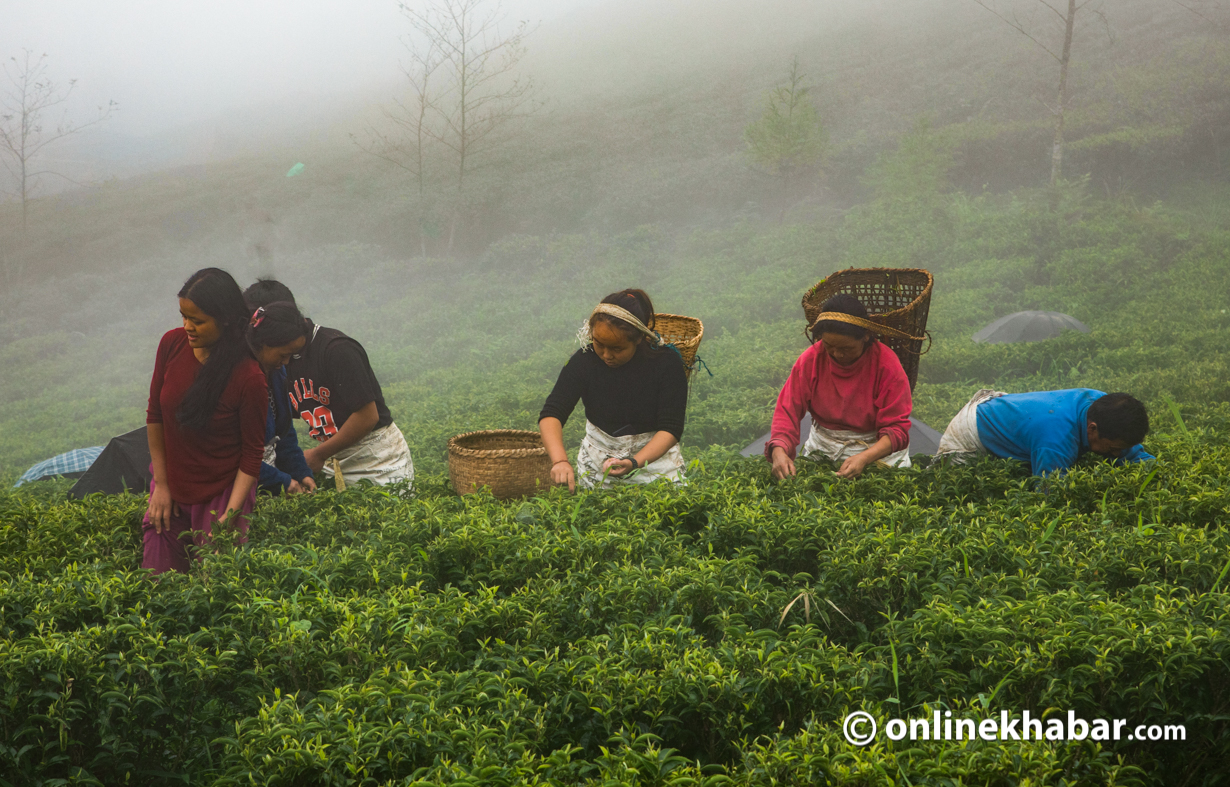
Tea is not merely a beverage; it is an experience to be savoured and observed. Taking a sip while admiring its essence creates a refreshing atmosphere. To truly grasp the intricacies of tea, a visit to a tea garden is invaluable, as it provides an up-close look at the nuances of tea production. The tea gardens of Ilam, in particular, offer a splendid insight into the journey of this exquisite product from leaf to cup.
Is it the geography of Ilam or the allure of its tea that is more captivating? It is a tough call to make. Nestled amidst the hillocks, the tea is planted in a manner akin to soldiers on parade, creating a striking visual. It is as if the tea is intentionally positioned to embellish the hills.
We embarked on a journey to explore the tea plantations in the heart of the monsoon season. Here, rain is unpredictable. The surroundings are cloaked in a blanket of grey fog, lending an ethereal quality to the landscape. The rain-drenched hills exude a refreshing dampness.
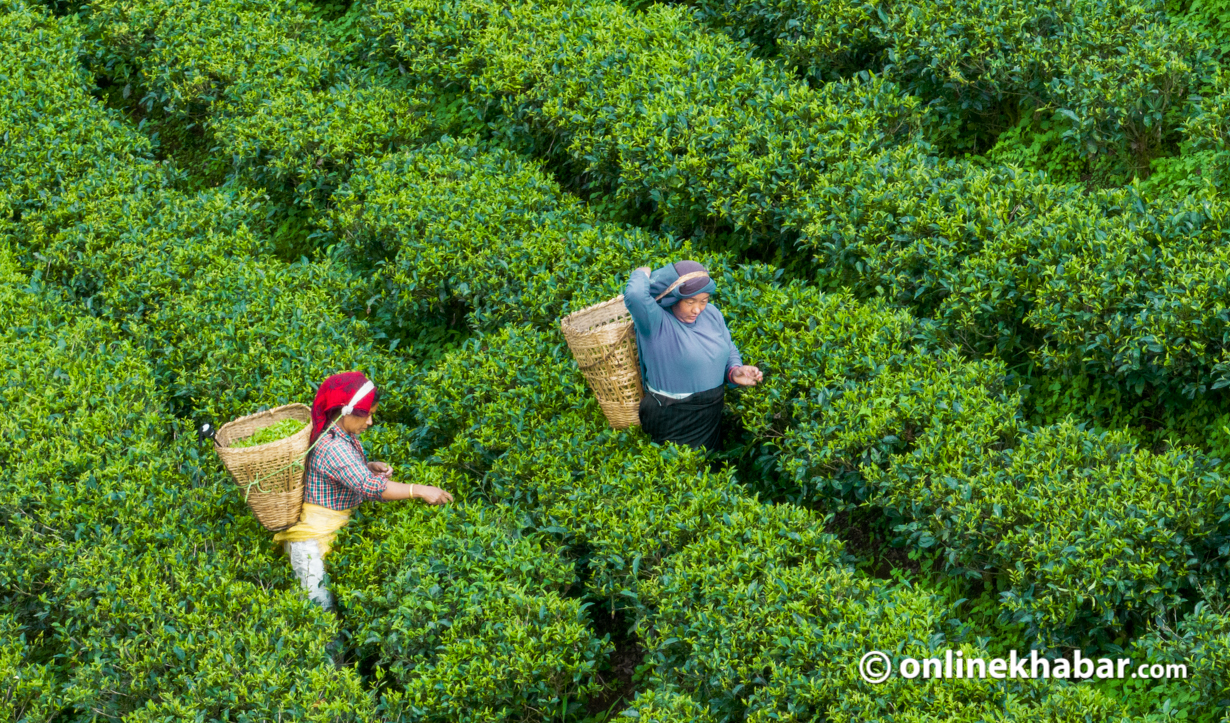
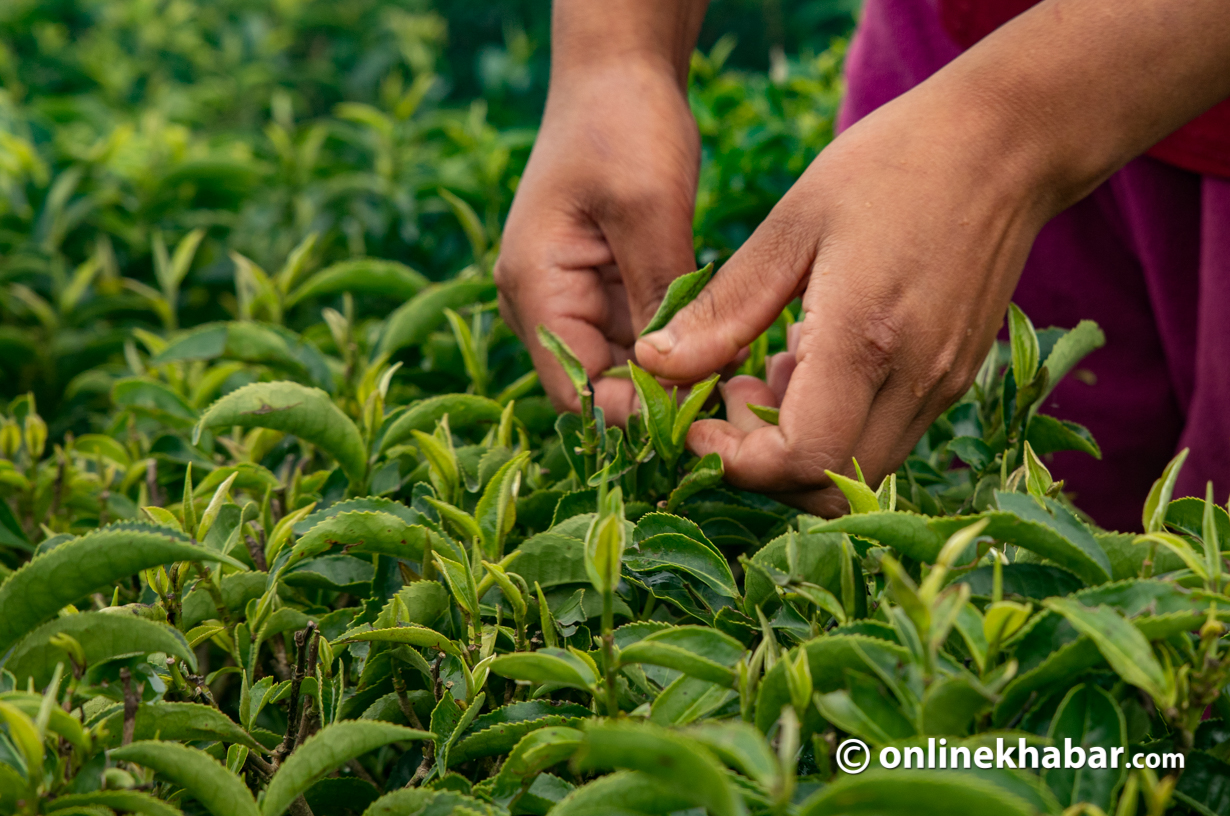
The tea pickers add an extra layer of charm to the scenery. As they stand in unison, plucking tea leaves, they can disappear into the fog in an instant. Observing these human forms against the backdrop of the tea plantation is akin to beholding a meticulously crafted canvas come to life.
A scene like this is a common sight in Ilam starting from mid-March. According to Sharad Subba, the owner of a tea factory in Ilam, this marks the beginning of the tea season that extends through the end of November. Subba said that teas harvested at the beginning and end of the season tend to boast superior quality. It is during these periods that foreign buyers exhibit a heightened demand for tea.
The peak period of tea production in Ilam, however, falls between June and July, making it the busiest time for tea farmers.
According to Subba, a significant portion of the tea produced in Ilam is destined for export. This region is particularly known for its distinctive varieties of black and green teas derived from tea leaves. The starting price for tea made from suiro begins at Rs 10,000 per kilogram. Interestingly, even if produced from the same plant and leaves, teas can possess distinct flavours and styles.
“Tea is an amalgamation of taste, aroma, and visual appeal,” Subba says. “It gratifies all five of our senses.”
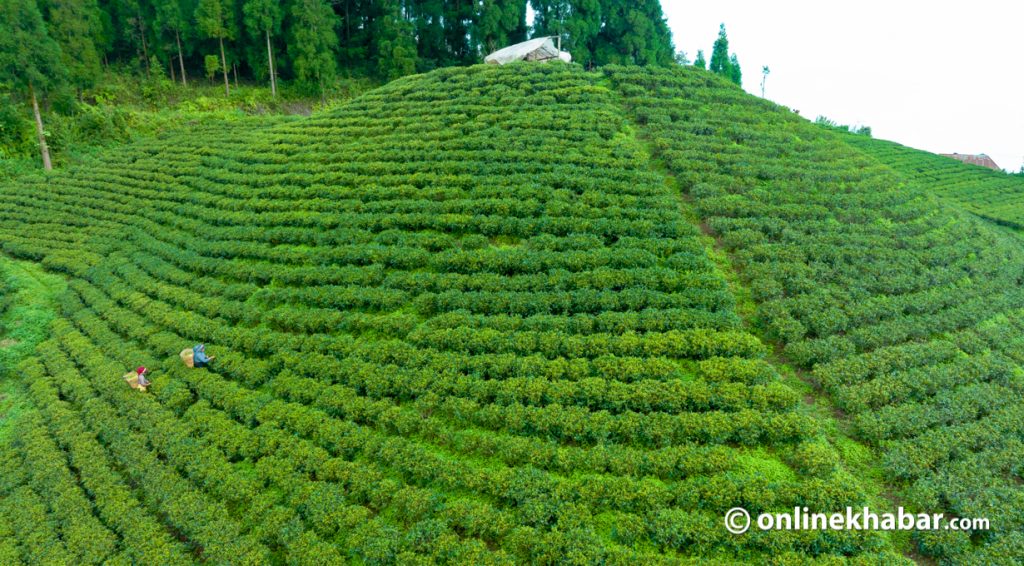
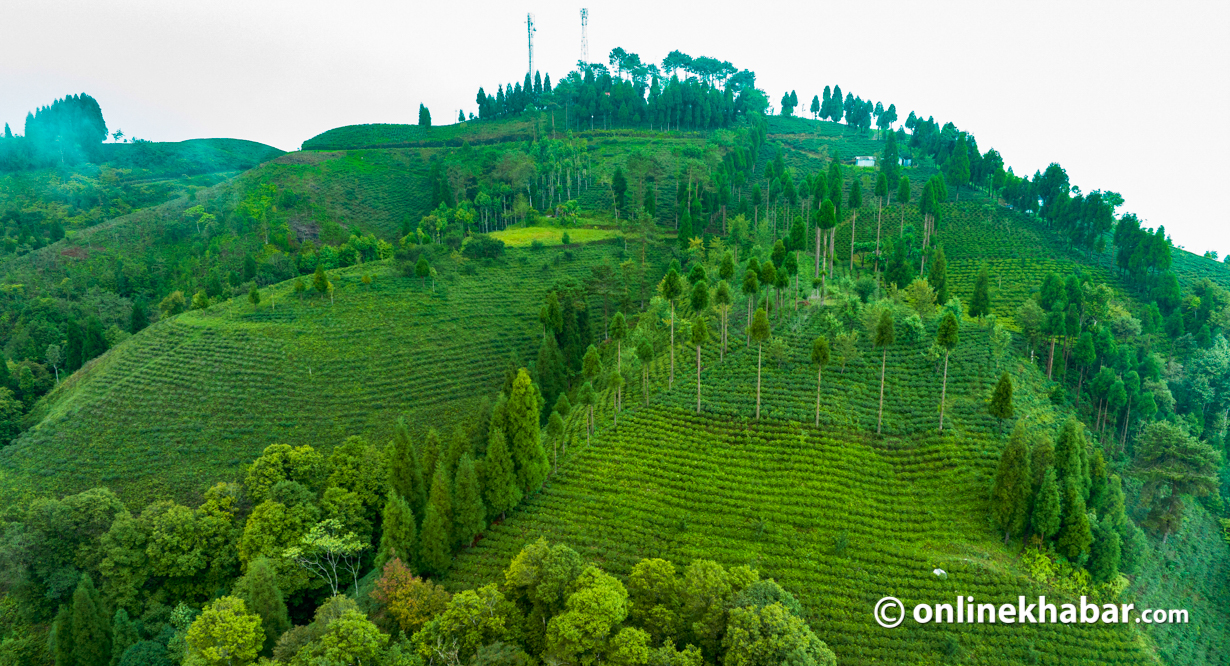
And he might be right. Observing the tea garden with our eyes, inhaling its aroma, savouring its taste, feeling it against our skin, and hearing the sound of tea in the cup, brings enjoyment to the ear.
Placing steaming hot tea in small cups to evoke the gentle sound of flowing water is an art form. Tea, in essence, is more than just a beverage. This revelation dawns upon anyone who has experienced the charm of Ilam’s tea plantations. Yet, there exists a darker underbelly to this picturesque facade. Despite its outward allure and delightful taste, the inner story of tea is not always as pleasant.
Subba said that nurturing tea demands a level of dedication akin to caring for an infant. He noted that this journey is fraught with numerous challenges and hardships for the farmers. In Ilam, farmers engaged in tea plantations often face delays in receiving fertilisers.

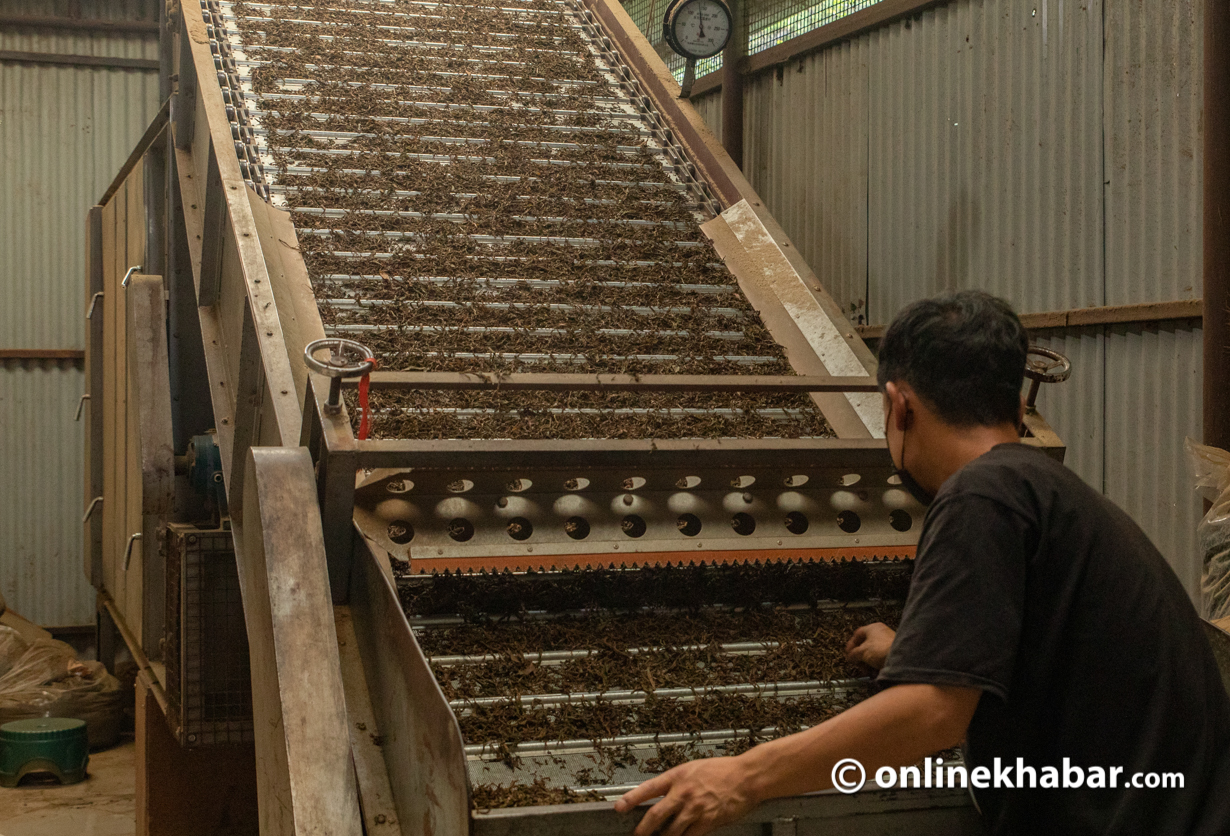
Additionally, the expense of pesticides can weigh heavily on their finances. Likewise, securing labourers during the crucial tea-picking season proves to be a challenging endeavour as well. The shortage of human resources is so severe that some individuals are turning to alternative forms of agriculture rather than focusing on tending to their tea gardens.
Once the tea season kicks in, the farmers and labourers in this region hardly find a moment to rest. Regardless of the weather—be it evening, rain, or cold—they toil tirelessly, akin to soldiers in the midst of battle. Those who pick tea around the clock, enduring rain and mud, often find themselves uncompensated for their efforts. Subba laments that middlemen have gained a significant foothold in the tea market, exacerbating the challenges faced by the farmers.


Conversely, in the midst of the tea season, the rural areas of Ilam are often plagued by frequent power outages, causing disruptions in the factories.
“The lack of electricity poses a risk of spoiling the tea and affecting its quality. As appealing as tea may appear externally, its underlying narrative is equally marked by challenges and setbacks,” says Subba.






